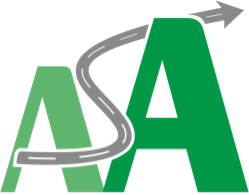
The Automotive SerDes Alliance (ASA) is a non-profit industry alliance of automotive technology providers collaborating to standardize asymmetric SerDes technology. The group was established in 2019 by BMW, Continental, Broadcom, Fraunhofer IIS and NXP and currently has more than 75 active member companies that work together to industrialize and promote the “ASA Motion Link”. The ASA Motion Link is the name for the developed Serializer / Deserializer (SerDes) high speed communication technology. It covers applications such as high-resolution video transmission for next generation displays. The line rate supported by the ASA Motion Link v1.01 SerDes ranges from 2 Gbps to 16 Gbps, with a back-channel support for command and control applications. The member companies of ASA include representatives from the complete automotive ecosystem; including car manufacturers, tier-ones, semiconductor vendors, cable and connector manufacturers, test tool vendors, and test houses. Having such a diverse and rich ecosystem ensures that the ASA standards development is in-tune with market requirements and is optimized through the participation of industry experts.
In order to organize the standards development in a systematic way, there are five Technical Committees (TC), each responsible for certain tasks in the technology industrialization process. Their goals are described below in more detail.
1. TCA – Physical Layer: TCA is the first Technical Committee in Automotive SerDes Alliance, and has been active since May 2019. It covers requirements for a successful physical data transmission needed to develop interoperable products. The Specification v1.01 supports maximum user data rates (which is always less than the line rate!) between 1.8 and 13 Gbps. TCA is now working on the support of higher user data rates up to 42 Gbps (64 Gbps line rate).
2. TCB – Data Link Layer & Application Stream Encapsulation Protocol (ASEP): TCB is the second technical committee in ASA, started in September 2019. This TC covers all data link layer aspects that allow for handling of different streams over one ASA link. It also covers the ASA formats for the encapsulation of higher layer protocols. With Specification 1.01, TCB covered general ASEPs for Video, GPIO, I2C and Ethernet. TCB is now working on optimized ASEPs for specific higher layer protocols such as the VESA eDP/DP and HDMI.
3. TCC – Security: TCC was founded in November 2019. As it has completed its task, it is currently in hibernation. TCC developed the interface specification necessary to optionally enable device authentication and secure end-to-end communication for ASA SerDes links. The security defined, is an integral part of the ASA Motion Link v1.01 and does not require additional overhead or changes in the transmission format when used. However, if security is not needed, the freed bandwidth can be used to increase the user data rates beyond the stated 1.8 to 13 Gbps.
4. TCD – Test: TCD was established in October 2020 to develop the Interoperability Testing and Compliance specification for ASA Motion Link transceivers. Its work is ongoing.
5. TCE – Channel & Components, EMC Tests: TCE was formed in May 2021. The scope of this committee is to define a test specification for the ASA communication link segment as well as EMC requirements and test methodologies for ASA PHY compliance. It works in close cooperation with the OPEN Alliance TC9 working group addressing the multigigabit Ethernet channel.
►
6. Marketing Committee: This committee was formed in June 2021, and its goal is to promote ASA standardization work amongst various automotive industry organizations. This committee manages ASA website and LinkedIn pages and coordinates the latest news pertaining to ASA through regular announcements and article publications.













More Stories
Some Ways How Motorists End Up in Collisions at U-Turns
Maximise Margins with Proven PPF Tactics
Finding the Car Boot Release Button – Tips and Tricks